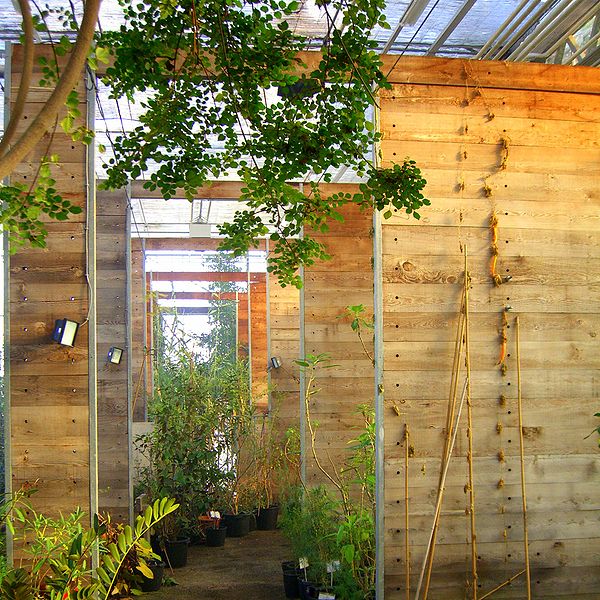The Softwood Lumber Board (SLB) and the Binational Softwood Lumber Council (BSLC) congratulated the U.S. Department of Agriculture on the formal launch of the U.S. Tall Wood Building Prize Competition.
The competition invites U.S. developers, institutions, organizations and design teams willing to undertake an alternative solution approach to designing and building taller wood structures to submit entries for a prize of $2 million.
Following a funding initiative announced by the Obama Administration and the U.S. forestry industry through the USDA, SLB and BSLC earlier this year, the goal of the prize competition is to link rural U.S. technical expertise and products with evolving domestic and international market opportunities to showcase the application and sustainability of innovative wood-based structural building materials and solutions.
The objective of the competition is to identify proponents with building project(s) in the concept-, schematic- or design-development stage in the U.S. that can safely and successfully demonstrate the use of wood as a viable structural material in tall buildings.
Above and beyond the safety, environmental and economic benefits of wood, the initiative will challenge developers, designers, building officials, builders and manufacturers to further develop and refine specification and use of structural wood products - ultimately expanding the opportunity for new product and market development.
Marc Brinkmeyer, SLB Board Chair explained, “There is a breadth of wood-related building science, design and construction that’s underway internationally. In recent years we’ve seen a number of buildings over seven stories constructed around the world, including the 10-story Forte building in Melbourne, Australia and the 14-story Treet building in Bergen, Norway."
The opportunity to learn from what’s been done elsewhere, and build on it here in the U.S., is very exciting for our industry, our employees and communities. I am equally thrilled and appreciative of the partnership that industry has forged with the USDA on this competition, and am looking forward to seeing the great wood-based projects that will result. Wood truly is an optimal choice for the environment and economy.”
The competition is the first step of a new USDA and forest industry initiative that is designed to support rural U.S. communities. Submissions that meet the criteria of the competition will be evaluated by an expert panel of design and building professionals. The full Official Rules document, related background information and contact details can be found on the prize competition website.
Related Stories
Office Buildings | May 20, 2024
10 spaces that are no longer optional to create a great workplace
Amenities are no longer optional. The new role of the office is not only a place to get work done, but to provide a mix of work experiences for employees.
Mass Timber | May 17, 2024
Charlotte's new multifamily mid-rise will feature exposed mass timber
Construction recently kicked off for Oxbow, a multifamily community in Charlotte’s The Mill District. The $97.8 million project, consisting of 389 rental units and 14,300 sf of commercial space, sits on 4.3 acres that formerly housed four commercial buildings. The street-level retail is designed for boutiques, coffee shops, and other neighborhood services.
Construction Costs | May 16, 2024
New download: BD+C's May 2024 Market Intelligence Report
Building Design+Construction's monthly Market Intelligence Report offers a snapshot of the health of the U.S. building construction industry, including the commercial, multifamily, institutional, and industrial building sectors. This report tracks the latest metrics related to construction spending, demand for design services, contractor backlogs, and material price trends.
K-12 Schools | May 15, 2024
A new Alabama high school supports hands-on, collaborative, and diverse learning
In Gulf Shores, a city on Alabama’s Gulf Coast, a new $137 million high school broke ground in late April and is expected to open in the fall of 2026. Designed by DLR Group and Goodwyn Mills Cawood, the 287,000-sf Gulf Shores High School will offer cutting-edge facilities and hands-on learning opportunities.
Adaptive Reuse | May 15, 2024
Modular adaptive reuse of parking structure grants future flexibility
The shift away from excessive parking requirements aligns with a broader movement, encouraging development of more sustainable and affordable housing.
Affordable Housing | May 14, 2024
Brooklyn's colorful new affordable housing project includes retail, public spaces
A new affordable housing development located in the fastest growing section of Brooklyn, N.Y., where over half the population lives below the poverty line, transformed a long vacant lot into a community asset. The Van Sinderen Plaza project consists of a newly constructed pair of seven-story buildings totaling 193,665 sf, including 130 affordable units.
K-12 Schools | May 13, 2024
S.M.A.R.T. campus combines 3 schools on one site
From the start of the design process for Santa Clara Unified School District’s new preK-12 campus, discussions moved beyond brick-and-mortar to focus on envisioning the future of education in Silicon Valley.
University Buildings | May 10, 2024
UNC Chapel Hill’s new medical education building offers seminar rooms and midsize classrooms—and notably, no lecture halls
The University of North Carolina at Chapel Hill has unveiled a new medical education building, Roper Hall. Designed by The S/L/A/M Collaborative (SLAM) and Flad Architects, the UNC School of Medicine’s new building intends to train new generations of physicians through dynamic and active modes of learning.
Sustainability | May 10, 2024
Perkins&Will’s first ESG report discloses operational performance data across key metrics
Perkins&Will recently released its first ESG report that discloses the firm’s operational performance data across key metrics and assesses its strengths and opportunities.
MFPRO+ News | May 10, 2024
HUD strengthens flood protection rules for new and rebuilt residential buildings
The U.S. Department of Housing and Urban Development (HUD) issued more stringent flood protection requirements for new and rebuilt homes that are developed with, or financed with, federal funds. The rule strengthens standards by increasing elevations and flood-proofing requirements of new properties in areas at risk of flooding.

















